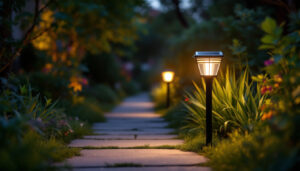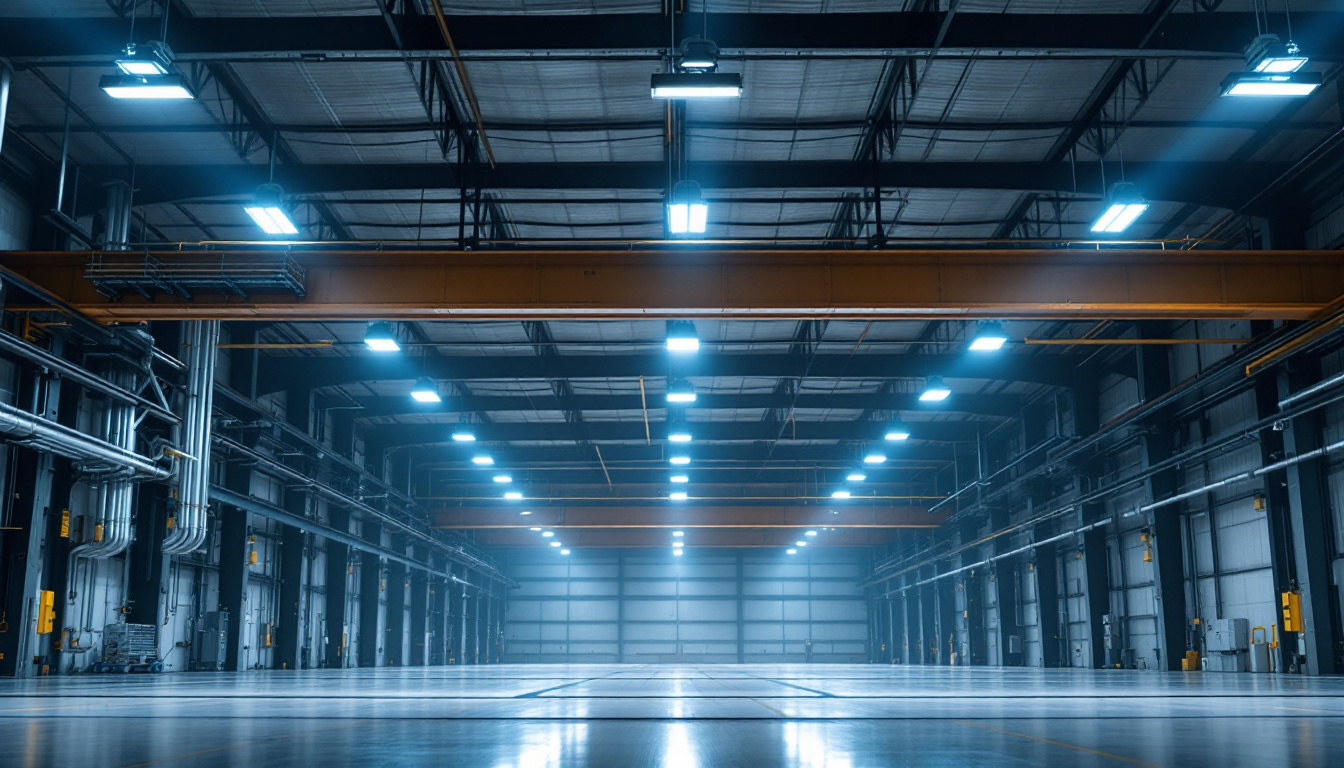

In the ever-evolving world of outdoor lighting, the choice between LED post lanterns and their alternatives has become a pivotal decision for lighting contractors. With advancements in technology and growing environmental concerns, understanding the benefits and drawbacks of each option is essential. This article delves into the features of LED post lanterns, compares them with traditional lighting alternatives, and provides insights to help contractors make informed choices.
LED post lanterns have gained popularity due to their energy efficiency, longevity, and aesthetic appeal. These fixtures are designed to illuminate pathways, gardens, and outdoor spaces while providing a modern touch to any landscape.
One of the most significant advantages of LED post lanterns is their energy efficiency. Unlike traditional incandescent or halogen bulbs, LEDs consume significantly less power while providing the same or even greater illumination. This efficiency translates into lower electricity bills for clients and reduced carbon footprints, making LED options an environmentally friendly choice.
Furthermore, the lifespan of LED bulbs far exceeds that of traditional lighting solutions. While incandescent bulbs may last around 1,000 hours, LEDs can operate for 25,000 hours or more. This longevity reduces the need for frequent replacements, which is a considerable advantage for contractors looking to minimize maintenance costs for their clients. Additionally, many LED post lanterns are equipped with advanced technology that allows for dimming capabilities and smart controls, enabling users to adjust brightness levels according to their needs and preferences, further enhancing energy savings.
LED post lanterns come in a variety of designs, styles, and finishes, allowing contractors to select fixtures that complement the architecture and landscaping of a property. Whether the project calls for a modern, sleek look or a more traditional aesthetic, there is likely an LED option that fits the bill. This versatility not only enhances the visual appeal of outdoor spaces but also allows for creative lighting solutions tailored to specific client needs. Moreover, many manufacturers offer customizable options, including color temperature choices, which can create different atmospheres ranging from warm and inviting to cool and contemporary.
In addition to their aesthetic flexibility, LED post lanterns can also be integrated with landscape design elements such as trees, shrubs, and walkways. By strategically placing these fixtures, designers can highlight architectural features or natural beauty, creating a cohesive and inviting outdoor environment. The ability to choose from various mounting heights and styles, such as classic lantern designs or sleek, minimalist poles, ensures that each installation can be uniquely suited to the specific character of the space, enhancing both functionality and visual interest.
While LED post lanterns offer numerous benefits, it is essential to consider alternative lighting options. Traditional incandescent bulbs, compact fluorescent lamps (CFLs), and high-intensity discharge (HID) lights each have their unique characteristics that may be suitable for specific applications.
Incandescent bulbs have been a staple in outdoor lighting for decades. They provide a warm glow that many homeowners appreciate, creating a cozy and inviting atmosphere. However, their energy consumption is significantly higher than that of LEDs, and their shorter lifespan can lead to increased operational costs over time.
For lighting contractors, the use of incandescent bulbs may be limited to specific scenarios where ambiance is prioritized over efficiency. While they can be suitable for decorative fixtures, the trend is moving towards more sustainable options, making LEDs the preferred choice in most cases. Additionally, incandescent bulbs are often less durable than their LED counterparts, making them more susceptible to damage from weather conditions, which can be a crucial consideration for outdoor installations.
CFLs were once heralded as a more energy-efficient alternative to incandescent bulbs. They consume less power and have a longer lifespan, typically lasting around 10,000 hours. However, CFLs have their drawbacks, including a longer warm-up time and the presence of mercury, which necessitates careful disposal.
For contractors, CFLs may be suitable for certain applications, but the limitations in terms of light quality and disposal issues make them less appealing compared to LED post lanterns. The growing preference for environmentally friendly solutions further diminishes the attractiveness of CFLs in the current market. Moreover, the color rendering index (CRI) of CFLs often falls short of that of LEDs, which can affect the appearance of outdoor spaces, especially in gardens or areas where aesthetics are crucial.
HID lights, including metal halide and sodium vapor lamps, are known for their high lumen output and efficiency in large outdoor areas. They are commonly used in commercial and industrial settings for their ability to illuminate vast spaces effectively. However, they also come with significant drawbacks, such as longer warm-up times and a shorter lifespan compared to LEDs.
While HID lights may still be a viable option for specific applications, the trend is shifting towards LED technology due to its superior energy efficiency and longevity. For lighting contractors, recommending LED post lanterns can provide clients with a more sustainable and cost-effective solution. Furthermore, HID lights often require more maintenance due to their fragility and the need for regular bulb replacements, which can lead to increased labor costs over time. As municipalities and businesses seek to reduce their carbon footprints, the transition to LED lighting becomes not just a preference but a necessity, making it imperative for contractors to stay informed about the latest advancements in LED technology.
Given the various options available, the benefits of LED post lanterns become increasingly clear. They not only meet the demands of modern lighting but also align with the growing emphasis on sustainability.
One of the most compelling reasons to choose LED post lanterns is the potential for cost savings. Although the initial investment may be higher than traditional lighting options, the long-term savings on energy bills and maintenance costs can be substantial. Clients will appreciate the reduced operational expenses, making it a win-win for both contractors and homeowners.
Additionally, many regions offer incentives for using energy-efficient lighting solutions, further offsetting the initial costs. Contractors can leverage these incentives to encourage clients to opt for LED installations.
As awareness of environmental issues grows, more clients are seeking sustainable solutions. LED post lanterns contribute to reducing energy consumption and lowering greenhouse gas emissions. By choosing LEDs, contractors can position themselves as environmentally conscious professionals, appealing to a broader client base.
Furthermore, the absence of toxic materials like mercury in LEDs makes them a safer choice for both the environment and human health. This aspect is increasingly important for clients who prioritize sustainability in their purchasing decisions.
LED post lanterns provide high-quality light that enhances visibility and safety in outdoor spaces. With options for adjustable color temperatures, contractors can customize the lighting to suit the specific ambiance desired by clients. Whether a warm, inviting glow or a bright, daylight-like illumination is needed, LED technology offers the flexibility to achieve the desired effect.
This enhanced light quality not only improves the aesthetic appeal of outdoor areas but also increases safety by illuminating pathways, driveways, and other critical areas effectively.
When opting for LED post lanterns, contractors must consider various installation factors to ensure optimal performance and client satisfaction.
Before installation, it is crucial to assess the existing wiring and compatibility of the LED fixtures with the current electrical system. Some LED post lanterns may require specific voltage levels or transformers, so understanding the technical requirements is essential for a successful installation.
Contractors should also ensure that the fixtures are compatible with any smart lighting systems that clients may wish to implement in the future. This foresight can enhance the value of the installation and provide clients with additional options for controlling their outdoor lighting.
The placement of LED post lanterns is critical for achieving the desired lighting effect. Contractors should consider factors such as the height of the fixtures, the angle of illumination, and the proximity to surrounding structures or landscaping. Proper placement not only enhances aesthetics but also maximizes the effectiveness of the lighting.
Additionally, collaborating with clients to understand their preferences and needs can lead to a more tailored lighting design. This engagement fosters client satisfaction and can result in positive referrals and repeat business.
While LED post lanterns require less maintenance than traditional lighting options, regular checks and cleaning are still necessary to ensure optimal performance. Contractors should educate clients on the importance of maintaining their lighting systems, including cleaning the fixtures and checking for any signs of wear or damage.
Offering maintenance services can also be an added value for contractors, establishing long-term relationships with clients and ensuring their lighting systems remain in excellent condition.
In the competitive world of outdoor lighting, the choice between LED post lanterns and their alternatives is crucial for lighting contractors. The benefits of LEDs—energy efficiency, longevity, aesthetic versatility, and reduced environmental impact—make them a compelling choice for modern installations.
While traditional lighting options may still hold some appeal in specific scenarios, the trend is clearly moving towards sustainable solutions. Contractors who embrace LED technology not only meet the demands of their clients but also position themselves as forward-thinking professionals in the industry.
Ultimately, the decision should be guided by the specific needs of each project, taking into account factors such as budget, aesthetics, and long-term sustainability. By prioritizing LED post lanterns, lighting contractors can provide their clients with a superior lighting solution that enhances outdoor spaces while contributing to a greener future.
Ready to elevate your lighting installations with the efficiency, longevity, and aesthetic versatility of LED post lanterns? Look no further than LumenWholesale, where we provide lighting contractors with spec-grade lighting products at unbeatable wholesale prices. Our commitment to quality and affordability ensures that you can offer your clients the best value without compromising on performance. Embrace the sustainable choice and enhance your outdoor lighting projects with our extensive selection. Make the smart choice for your business and the environment—visit Wholesale Lighting at the Best Value today and experience the LumenWholesale difference.

Discover why purchasing LED magnetic strip retrofit kits in bulk from local distributors might not be your best choice.

Discover why ceiling fans are an essential consideration for lighting contractors.

Discover the essential insights lighting contractors need to know about solar lights for yards.

Discover the key differences between high bay and low bay lighting with expert tips from seasoned contractors.
Get notified when NEW deals are released.
Optimize your budget with wholesale discounts.
Only top-quality, specification-grade lighting products.
No additional costs at checkout - what you see is what you pay.
We understand the unique needs of contractors.